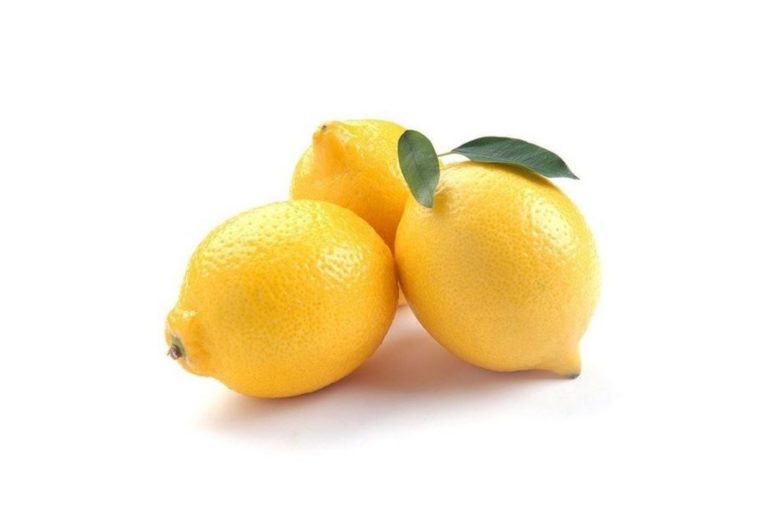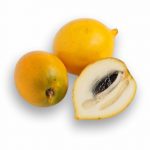There are several species of fruit in the world. Each family is unique and has their nuances. The citrus family is one of them. It encompasses orange, malta, mosambi, lemon, lime, and even more. This list is expansive. While some varieties of these fruits are available in India, other endemic varieties are imported to the country. One of the naturally occurring citrus varieties is the Galgal fruit.
What is a Galgal Fruit
Galgal fruit is often called khatta, Kumaon lemon, or Pahari nimbu. It is often called hill lemon due to its abundant production in the hilly regions of India and Nepal. Botanists have termed the fruit as ‘Citrus pseudolimon Tanaka’. It is a vital element in many Indian curries and ancient Indian medicines. The fruit comes to full bloom in the winter season (October – January).
In the regions of the eastern Himalayas, the galgal plant is considered auspicious. Their leave and fruits are used in many religious ceremonies.
History of Galgal Fruit
Galgal fruit is one of the three original citrus species. It was the precursor of the new citrus species. The new ones underwent hybridization either naturally or artificially. These fruits are native to Himachal Pradesh, Jammu & Kashmir, Uttarakhand, and Nepal.
Nutritional Value of Galgal Fruit
Galgal fruit has a complex chemistry. It is filled to the brim with vitamins, minerals, fibers, antioxidants, and other important elements. Its nutritional value makes it impossible to resist. The following table describes the nutritional content in 200 gms (roughly 1 cup) of a galgal fruit.
| Energy | 118 Kcal |
| Water/ Moisture | 84.6% |
| Protein | 3 gms |
| Fat | 2 gms |
| Fiber | 2.6 gms |
| Carbohydrate | 20 gms |
| Calcium | 180 mgms |
| Phosphorus | 40 mgms |
| Iron | 0.6 mgms |
Benefits of Galgal Fruit
There is no doubt that a galgal fruit is packed with nutrition. In addition, its rind can be employed in several beneficial ways.
- The high vitamin C content protects against free radicals. This property reduces the risk of any lingering heart attacks and cardiovascular diseases.
- The high pectin quantity keeps you full for a long. It also promotes weight loss.
- It increases the body’s iron absorption rate. Thus, it can prevent anemia.
- The fruit diminishes the digestion of starch and sugar, effectively lowering the blood sugar level.
- They increase the urine pH and volume. Thus, the kidneys are washed at regular intervals. It decreases the risk of developing kidney stones.
- It is an anti-inflammatory. The antioxidants prevent the cells from damage, which is the leading cause of cancer.
How to Cut Galgal Fruit?
Galgal is like lemon in many ways, but it is bigger It has a thick rind, which exuberates a mild citrusy aroma. The fruit is oblong or oval with pointed ends. It has 10-12 segments divided by a thin membrane. The exterior is yellow, while the pulp is pale yellow. The seeds are loosely embedded into the flesh. They have a low sugar content and are highly acidic in taste.
A galgal fruit is akin to other citrus fruits and can be cut and eaten. The following directions may help you to eat the pulp of the fruit. Before you proceed, you must wash the fruit thoroughly to remove any residual pesticides or insecticides.
- Using a pairing knife, score the top and sides of the fruit. Make sure that you are not cutting into the fruit.
- Peel the fruit using your hands.
- You may now divide it into segments using your fingers. This will keep the pulp and the juices inside the membrane
- If you wish, you may use the pairing knife to slice it into wheels, wedges, or segments.
If you desire, you may even keep the peel on. However, you must avoid ingesting the peel.
How to Eat Galgal Fruit?
Galgal fruit can be eaten in myriad ways. It is mostly eaten raw. Due to its tangy flavor, it is a staple in homemade pickles and murabbas. At times, it is preserved as a concentrated juice, locally known as ‘chukh’. If you wish to try galgal in a fun and adventurous way, you must try the following recipes.
1. Galgal Chutney
Galgal fruit is excellent as a chutney. You can eat it with rice or paranthas. This chutney is sure to add an extra dimension to your plate.
Ingredients
To make a tangy and sour galgal chutney, you will require the following ingredients.
- Ripe galgal fruit – 1 kg
- Mustard oil – 10 tablespoons
- Methi powder/ fenugreek powder – 2 tablespoons
- Turmeric powder – 1 tablespoon
- Red chilies – Depending on your desired spice levels
- Jaggery – 250 gms
- Salt – according to your taste
Recipe
The following steps will bring you closer to a delectable chutney.
- Place the fruit in boiling water for about 10-12 minutes.
- Drain the pot and dry them under the sun for at least 7 hours or more. Once they have dried a little bit, you must keep them open for about 2 days.
- Cut the fruit into pieces and stir fry in mustard oil.
- At this point, you must add turmeric powder and methi powder. Add chili and salt according to your taste.
- Take the mixture off the heat and pour crushed jaggery over it. Remember to mix it in well.
- Transfer the mixture to a ceramic pot. Keep this pot in the sun for 4-5 days.
Although you may enjoy the pickle right away, the flavors will start to mesh well within 15-20 days. Therefore, we recommend you to be patient.
2. Galgal Chacha
A chacha is simply a galgal fruit bowl. It is mixed with a spicy dressing. This dish is often consumed as a snack.
Ingredients
The chacha is a tangy spicy fruit bowl. For this recipe, you will need the following ingredients.
- Ripe galgal fruit – 3-4
- Coriander leaves
- Mint leaves
- Ginger
- Garlic – 4-6 cloves
- Green chilies – Depending on your desired spice levels
- Mustard Oil – 3-4 tablespoons
- Sweetener of your choice – 50 gms
- Salt – according to your taste
Recipe
A chacha is pretty easy to make if you follow the given directions.
- Bring together coriander leaves, mint leaves, green chilies, salt, ginger, and garlic in a mortar or a grinder. Blend it into a paste.
- Peel and dice the galgal fruit.
- Mix the paste with the galgal fruit.
- Top it off with the sweetener and mix it well.
- Take a piece of burnt charcoal and put it inside the mixture. Drop some mustard oil over it to make it sizzle.
- Cover the concoction with a plate for 1-2 minutes.
- Take the piece of charcoal out and give it a mix.
Your chacha is now ready to be served. Not only will it have a tangy spicy taste, but you can also smell and taste the smokiness rendered by the charcoal.
Check out other fruits too for different flavours:
1. Abiu Fruit
2. National Fruit of India Mango
Conclusion
Galgal fruit is different from other members of its family due to its extremely tangy and mildly sweet taste. This fruit overflows with essential nutrients and their consequential health benefits. This is the primary reason why the fruit must be incorporated into the diet. Although it can be eaten raw, its pickles, chutneys, and concentrated juice make an excellent side to your plates.
So what are you waiting for? Get your hands on a ripe galgal fruit right away.





